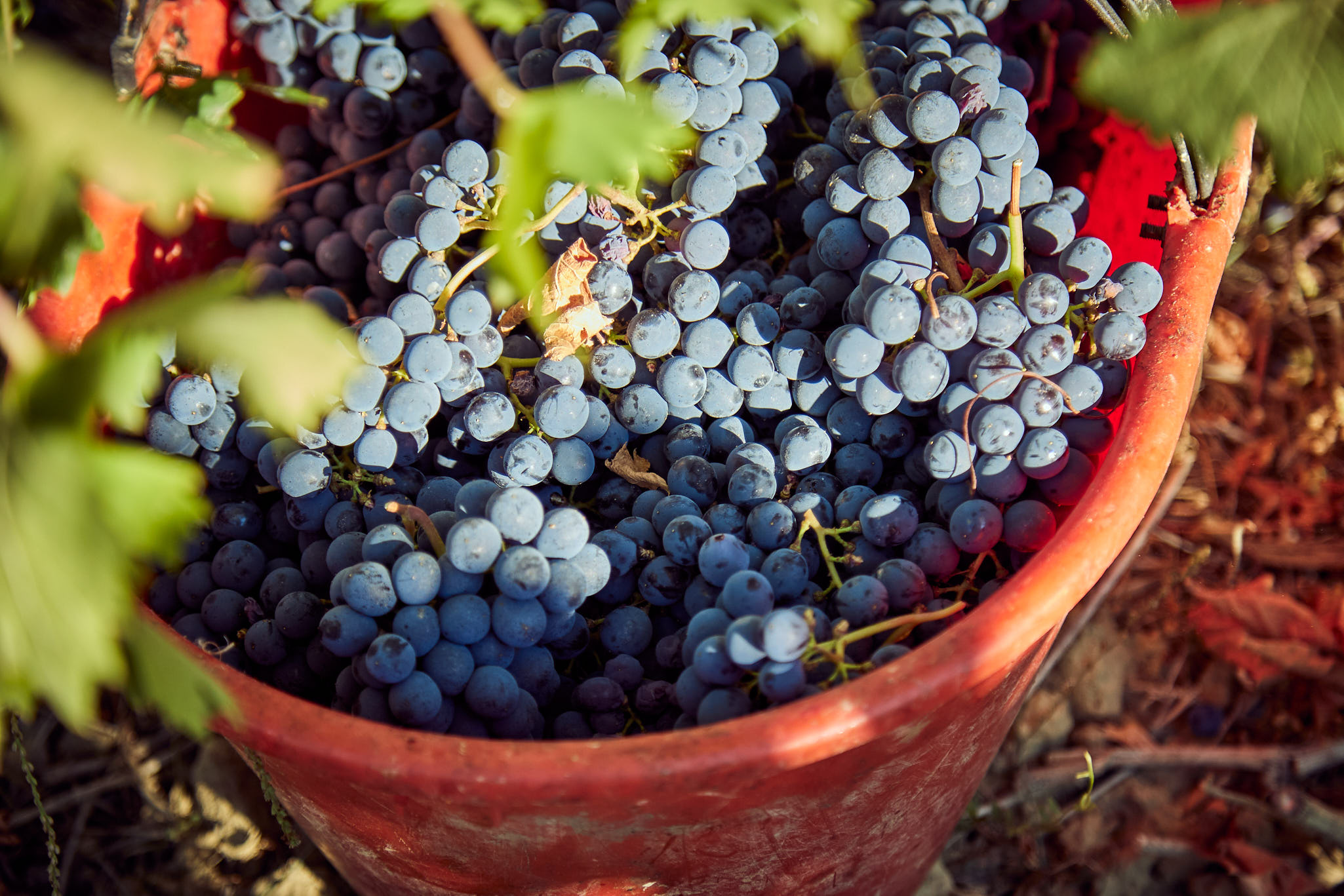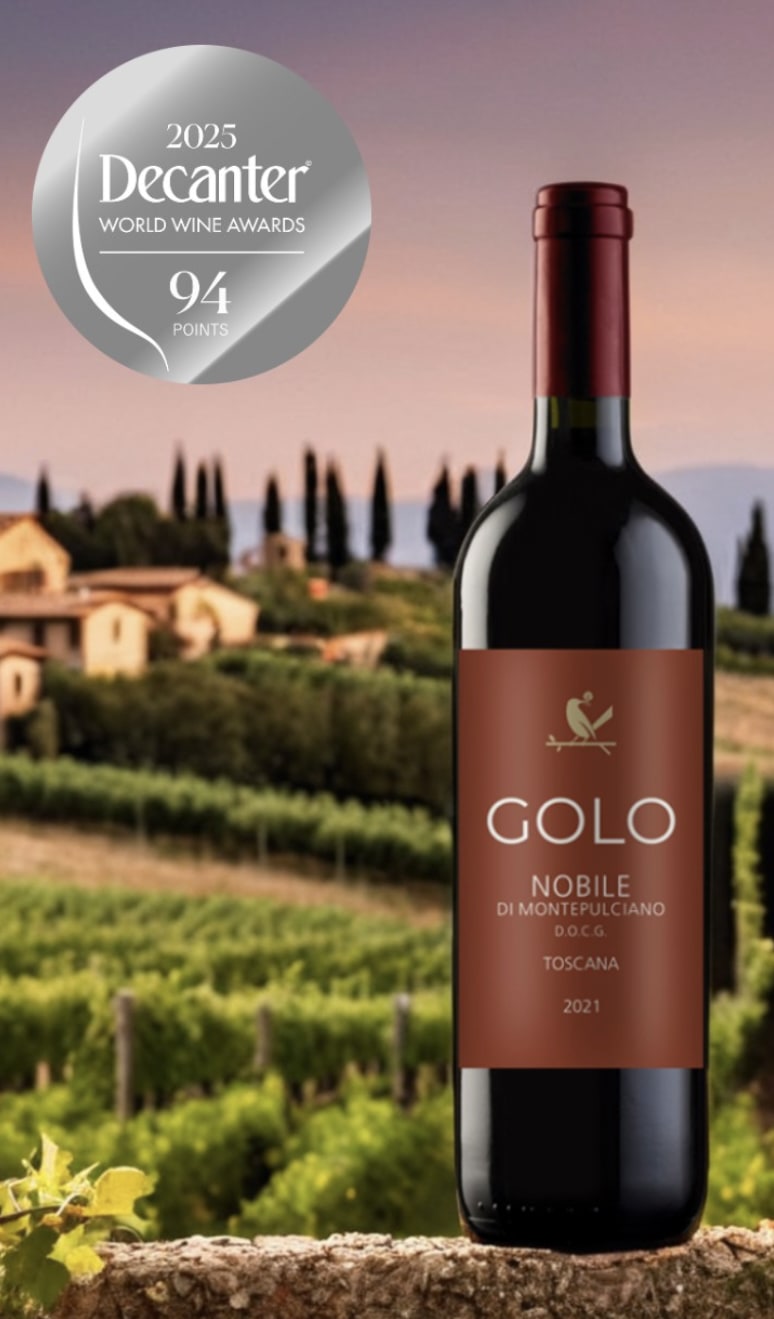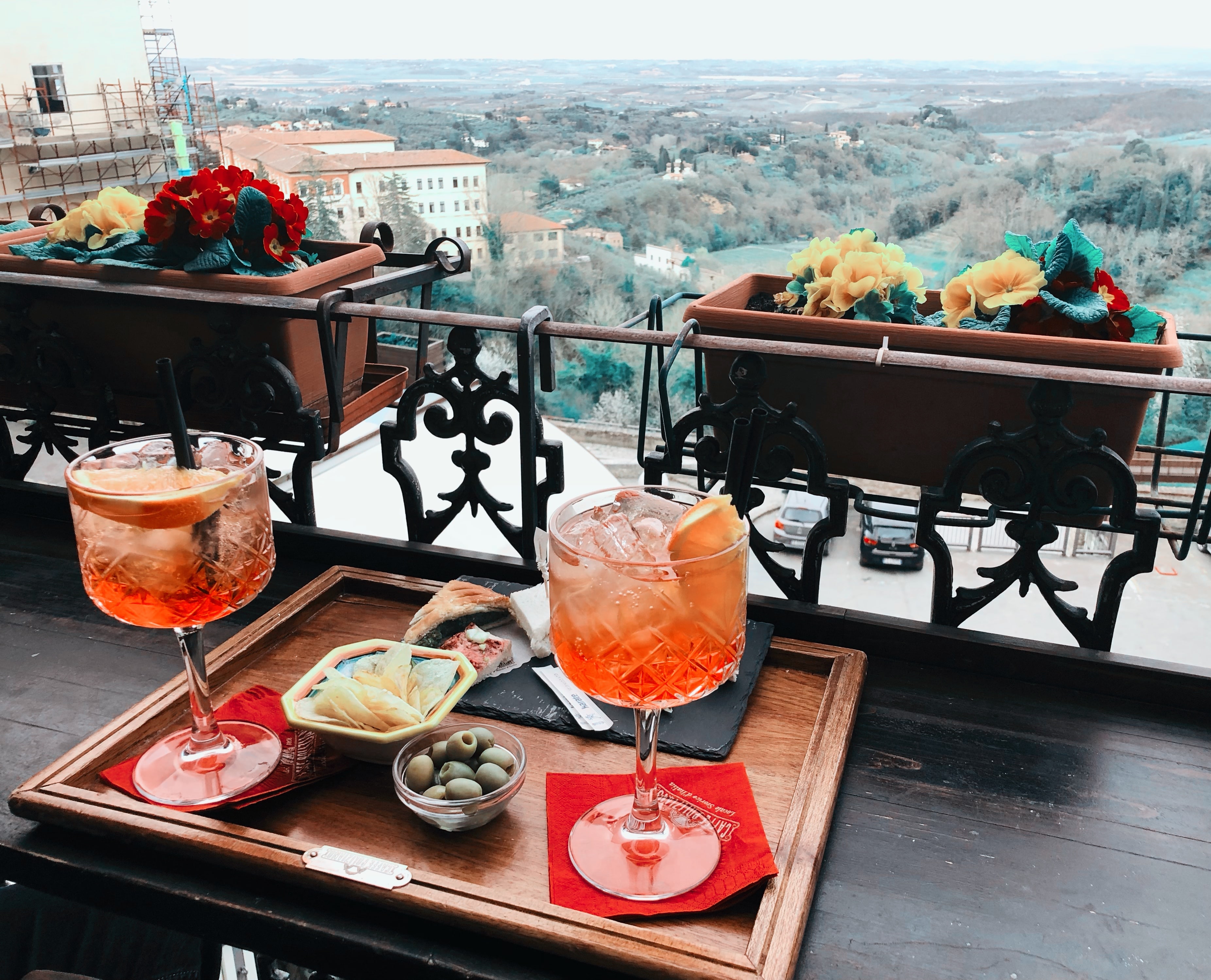Italian Red Montepulciano Guide: Discover This Classic Wine 2025
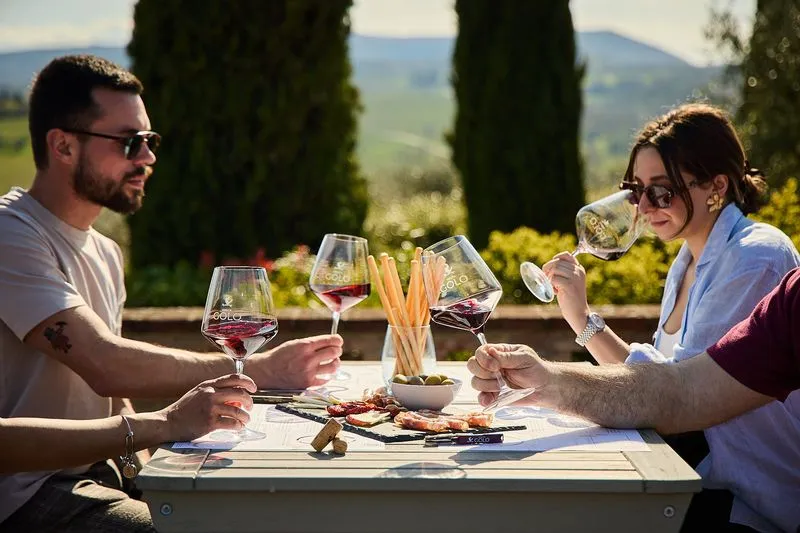
Step into the world of Italian red Montepulciano, a wine celebrated by enthusiasts across the globe for its vibrant character and timeless appeal. As its popularity soars in 2025, many are curious about what sets this classic apart from other Italian reds.
This guide will unravel the story behind Italian red Montepulciano, from its origins and grape variety to its unique regional styles and tasting notes. Discover perfect food pairings, meet top producers, and learn expert tips for selecting the finest bottles. Let’s explore why Montepulciano remains a beloved choice for wine lovers everywhere.
Understanding Montepulciano: Grape, Region, and Wine
Exploring italian red montepulciano begins with unraveling its true identity. Many wine lovers mistakenly believe Montepulciano is just a place, but in reality, it is also the name of a grape that has shaped Italian winemaking for centuries. Understanding this distinction is key to appreciating the diversity and character of italian red montepulciano.
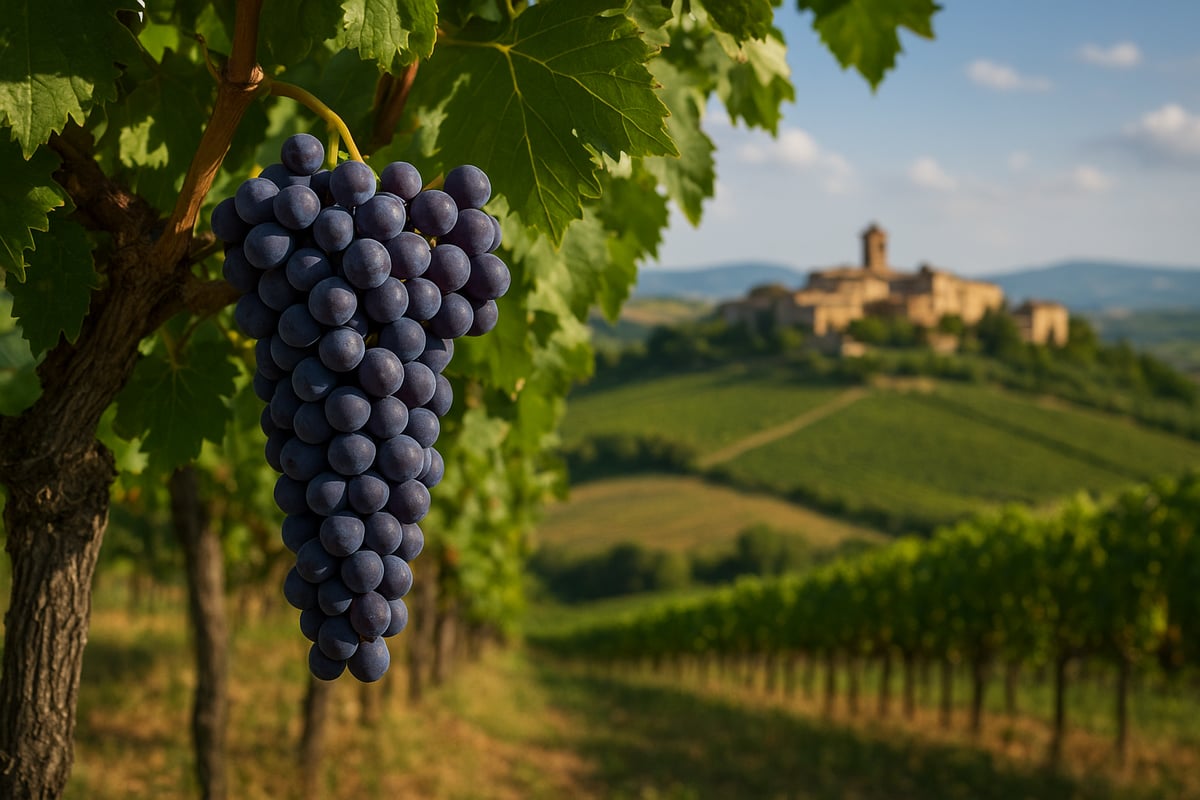
The Montepulciano Grape: Not Just a Place
The Montepulciano grape is often confused with the picturesque Tuscan town of Montepulciano, but they are entirely separate. While the town is famed for Vino Nobile di Montepulciano, that wine is made primarily from Sangiovese, not the Montepulciano grape.
This grape originated in central Italy and has spread across the country, especially in regions like Abruzzo and Marche. Montepulciano is now Italy’s second most-planted red grape variety. Its genetic profile gives it thick skins, which contribute to the deep color and structure of italian red montepulciano wines.
Compared to other Italian reds like Sangiovese and Nebbiolo, Montepulciano tends to produce wines with softer tannins and a richer, fruit-driven profile. The grape’s DNA and viticultural traits make it adaptable to various climates, allowing it to thrive from coastal plains to hillside vineyards. For a deeper dive into its origins and synonyms, see the Montepulciano grape characteristics.
A frequent source of confusion is the difference between Montepulciano d’Abruzzo and Vino Nobile di Montepulciano. The former is made from the Montepulciano grape, while the latter is a Sangiovese-based wine from Tuscany. This mix-up highlights the importance of reading Italian wine labels closely when shopping for italian red montepulciano.
| Wine Style | Main Grape | Region | Notable Traits |
|---|---|---|---|
| Montepulciano d’Abruzzo | Montepulciano | Abruzzo | Deep color, soft tannins |
| Vino Nobile di Montepulciano | Sangiovese | Tuscany | Firm tannins, elegance |
Key Regions Producing Montepulciano Wines
The heartland of italian red montepulciano is Abruzzo, where Montepulciano d’Abruzzo DOC and DOCG wines are produced. Here, the grape expresses itself with full-bodied flavors, vibrant acidity, and signature aromas of cherry and plum. The region’s rolling hills and Adriatic breezes create ideal conditions for slow ripening, enhancing both concentration and balance.
In Marche, Montepulciano is often blended with Sangiovese in Rosso Piceno and Rosso Conero wines. These blends offer a unique take on italian red montepulciano, balancing fruitiness with structure. Molise and other regions, though smaller in scale, also produce notable Montepulciano-based wines that showcase local terroir.
Climate and soil play a vital role in shaping the final wine. Montepulciano vines thrive in calcareous and clay-rich soils, which help retain moisture and support even ripening. Regional regulations, including DOC and DOCG classifications, ensure quality and authenticity. For example, Abruzzo enforces strict yield limits and aging requirements, resulting in consistently high standards for italian red montepulciano.
As you explore these regions, notice how climate, soil, and tradition combine to create a spectrum of Montepulciano wines, each offering a distinct expression of Italian winemaking.
Montepulciano d’Abruzzo: The Quintessential Italian Red
Montepulciano d’Abruzzo stands as the flagship expression of the italian red montepulciano grape, capturing the spirit of central Italy in every glass. With a deep-rooted legacy and rapidly growing recognition, this wine has become a staple for both seasoned collectors and casual wine lovers worldwide. Its journey from local favorite to international classic is a testament to its enduring appeal and versatility.
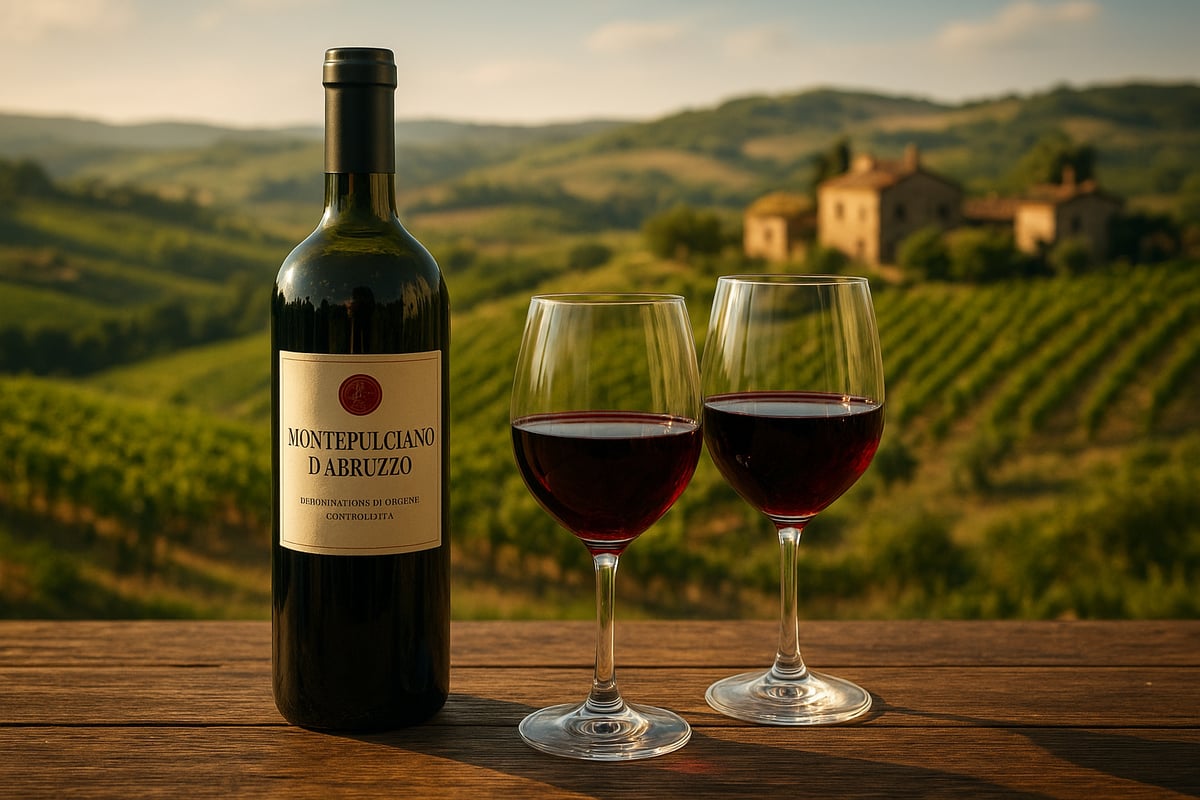
History and Rise to Prominence
The story of Montepulciano d’Abruzzo begins in the heart of Abruzzo, where the italian red montepulciano grape has thrived for centuries. Officially recognized as a DOC in 1968, this wine quickly established its reputation for quality and approachability. The region’s rugged mountains and Adriatic breezes create the perfect environment for cultivating grapes with rich color and balanced acidity.
As export markets opened up in the late 20th century, Montepulciano d’Abruzzo captured the attention of wine enthusiasts in the United States and the United Kingdom. Its combination of affordability, food-friendliness, and consistent quality drove its popularity, making it a fixture on restaurant lists and in home cellars. Top producers began to earn international awards, further cementing the wine’s status as an ambassador of Italian tradition.
Today, Montepulciano d’Abruzzo is celebrated not just for its heritage, but for its dynamic presence in the global wine scene. The italian red montepulciano continues to attract both new and seasoned wine lovers seeking authentic Italian flavors.
Wine Styles and Characteristics
Montepulciano d’Abruzzo offers a vivid sensory experience defined by its signature aromas and taste. In the glass, it typically reveals ripe cherry, plum, blackberry, and subtle hints of herbs and sweet spice. The palate is marked by a medium to full body, moderate tannins, and vibrant acidity, making it one of the most versatile reds for food pairing.
There are several key styles within the DOC:
| Style | Aging Requirement | Profile |
|---|---|---|
| Standard DOC | Minimal aging | Fresh, fruit-driven, soft tannins |
| Riserva | Minimum 2 years aging | More structure, depth, aging notes |
| Colline Teramane DOCG | Stricter controls, aging | Complex, cellar-worthy, nuanced |
The italian red montepulciano grape’s character is shaped by the region’s diverse terroirs. Wines from coastal zones tend to be juicier and softer, while those from inland hills show more structure and intensity. For those interested in the technical side, the Montepulciano d'Abruzzo DOC regulations outline the strict standards that producers must follow to ensure authenticity.
Aging potential varies. Standard bottlings are best enjoyed within a few years, while Riserva and DOCG wines can develop complexity for up to a decade or more. The italian red montepulciano is admired for its ability to please both drinkers seeking freshness and those who appreciate the rewards of cellaring.
Value and Accessibility
One of the greatest strengths of Montepulciano d’Abruzzo is its accessibility. The italian red montepulciano is widely available at approachable price points, with most bottles ranging from $10 to $30. This makes it an excellent introduction to Italian reds, whether you’re picking up a bottle at the supermarket or exploring curated selections at specialty wine shops.
Several producers have become household names thanks to their commitment to quality and consistency. Notable brands include Zaccagnini, Masciarelli, Barba, and Saladini Pilastri. These wineries continue to innovate with organic and sustainable practices, reflecting a broader movement within the region.
The italian red montepulciano’s versatility and value have secured its place at everyday tables and special occasions alike. Its approachable style, paired with a growing emphasis on environmental stewardship, ensures that Montepulciano d’Abruzzo will remain a classic choice for years to come.
Vino Nobile di Montepulciano: Tuscany’s Noble Red
Vino Nobile di Montepulciano is a wine steeped in tradition and prestige, standing out as one of the oldest and most respected DOCG reds in Italy. For anyone exploring the world of italian red montepulciano, understanding the true heritage of this Tuscan classic is essential. Produced exclusively in the picturesque town of Montepulciano, this wine captures the soul of Tuscany in every bottle.
Unique Identity and History
The unique character of Vino Nobile di Montepulciano begins with its origins. Unlike many assume, the wine is not made from the Montepulciano grape but from Sangiovese, locally called Prugnolo Gentile. This distinction is crucial for those seeking authentic italian red montepulciano, as the wine's identity is deeply tied to the terroir of Montepulciano in Tuscany.
Vino Nobile di Montepulciano has been celebrated since the Middle Ages, with written records dating back to the 14th century. Known for its noble reputation and the favor of historic figures, it was among the first Italian wines to achieve DOCG status in 1980. This long-standing recognition cements its place among Italy’s finest reds.
Today, producers continue to honor centuries-old traditions, crafting wines that reflect both heritage and innovation. The result is a classic red that embodies the elegance and depth expected from Tuscany.
Tasting Profile and Structure
Vino Nobile di Montepulciano offers an inviting sensory experience. On the nose, expect aromas of dark cherry, wild berries, violet, and subtle hints of tobacco and leather. The palate is structured yet refined, with firm tannins, vibrant acidity, and a lingering finish. These attributes give italian red montepulciano remarkable aging potential.
To better understand how Vino Nobile di Montepulciano compares to other Tuscan classics, consider the following:
| Wine | Primary Grape | Tasting Notes | Aging Potential | Style |
|---|---|---|---|---|
| Vino Nobile di Montepulciano | Sangiovese (Prugnolo Gentile) | Cherry, berries, leather, violet | 10–20 years | Elegant, balanced |
| Brunello di Montalcino | Sangiovese | Plum, spice, earth, balsamic | 20+ years | Powerful, structured |
| Chianti Classico | Sangiovese | Red fruit, herbs, floral | 5–15 years | Fresh, vibrant |
A well-aged bottle develops earthy, savory nuances, making it a sophisticated choice for both collectors and casual wine lovers.
Classification and Regulations
The regulatory framework for Vino Nobile di Montepulciano is rigorous, ensuring quality and authenticity. According to DOCG rules:
- The wine must contain at least 70% Sangiovese (Prugnolo Gentile).
- Only grapes grown within the Montepulciano commune are permitted.
- Minimum aging: two years for standard, three years for Riserva bottlings.
- Strict yield limits and quality controls.
For in-depth details about styles, regulations, and producers, consult this Vino Nobile di Montepulciano guide.
Notable producers include Avignonesi, Poliziano, and Salcheto, each offering unique expressions of italian red montepulciano. Boutique estates and family-run wineries further enrich the diversity of the region’s wines.
Experience Authentic Vino Nobile at Tenuta Golo
To truly appreciate italian red montepulciano, a visit to Tenuta Golo in Cervognano is a must. This boutique winery crafts estate-grown, small-batch Nobile di Montepulciano DOCG wines, focusing on authenticity and terroir. The 17th-century estate offers immersive wine-tasting experiences, blending history with modern hospitality.
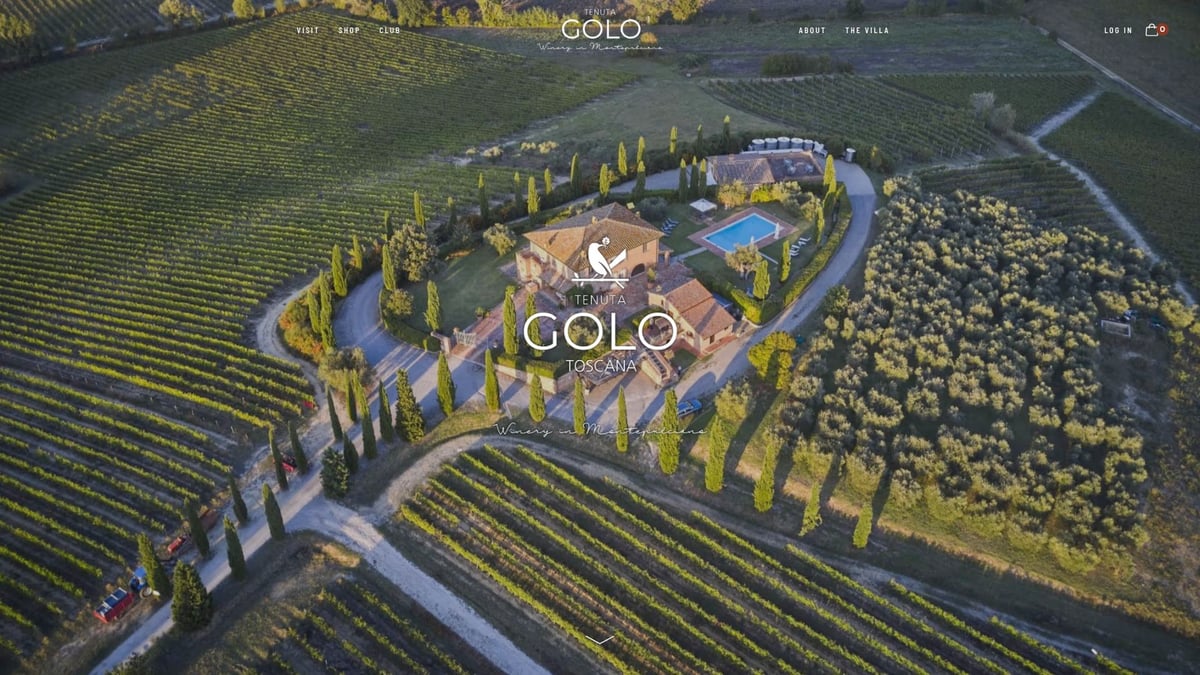
Guests enjoy guided tastings, where stories of the land and the meticulous winemaking process come alive. Food pairings highlight the best of Tuscan cuisine, perfectly complementing each glass of italian red montepulciano.
Tenuta Golo’s commitment to quality and intimate experiences makes it an essential destination for enthusiasts. Whether you’re a seasoned collector or a curious traveler, exploring their cellars and vineyards will deepen your connection to this noble wine.
Tasting Montepulciano: Flavor Profiles, Styles & Pairings
Exploring the world of italian red montepulciano wines is a journey rich in flavor and tradition. Understanding their unique tasting profiles and how they shine at the table will help you fully appreciate why these reds are so beloved in 2025.
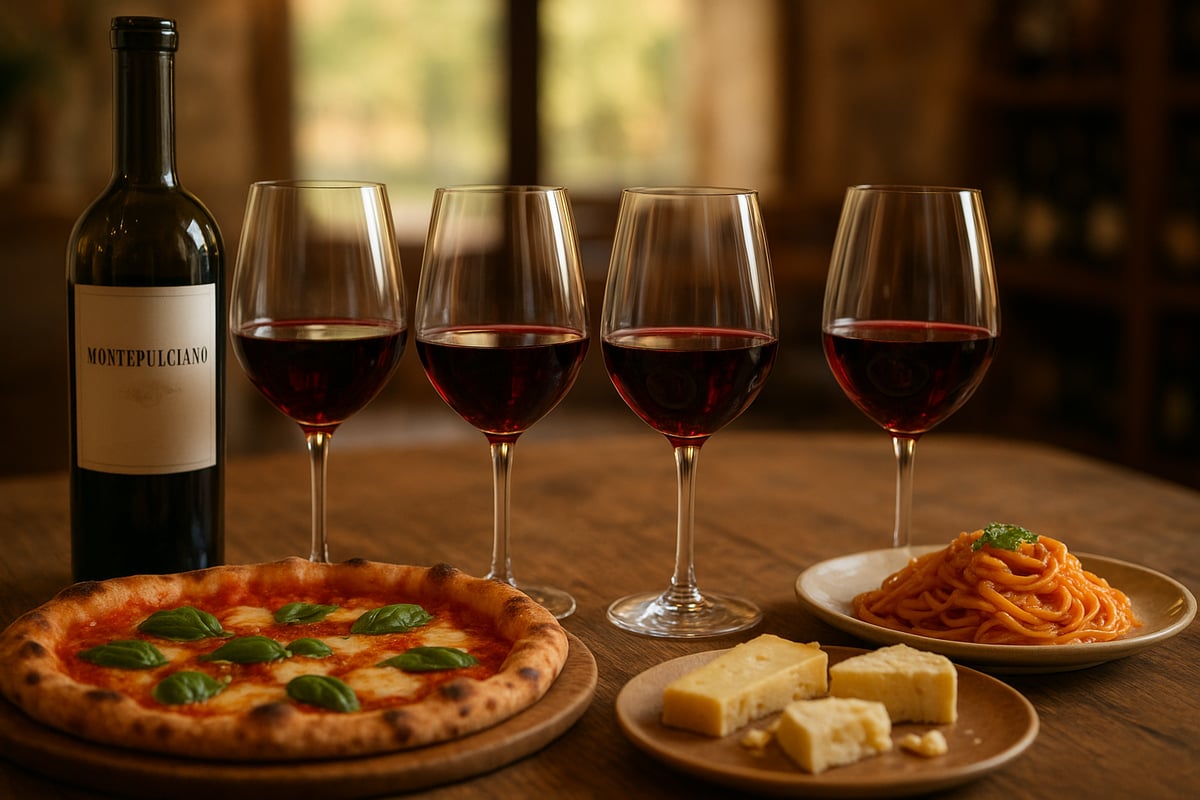
Montepulciano d’Abruzzo: Flavors and Serving Tips
Montepulciano d’Abruzzo is the cornerstone of the italian red montepulciano category, prized for its vibrant fruit and versatility. In the glass, expect enticing aromas of ripe cherry, plum, and hints of dried herbs. Subtle notes of sweet spice and soft earthiness often round out the bouquet.
On the palate, this wine delivers juicy acidity with approachable tannins and a medium to full body. It’s food-friendly and lively, making it a favorite for casual meals and special occasions alike.
For the best experience, serve Montepulciano d’Abruzzo at 16–18°C (60–64°F) in a large, tulip-shaped glass. Decanting for 30 minutes can help open up its fruit and spice notes, particularly in Riserva bottlings.
Notable vintages such as 2015 and 2021 stand out for their balance and depth. When choosing an italian red montepulciano, consider the producer’s style and the vintage’s growing conditions for optimal enjoyment.
Vino Nobile di Montepulciano: Flavors and Aging
Vino Nobile di Montepulciano offers a more structured and elegant interpretation of the italian red montepulciano tradition. Its aromatic complexity is remarkable, with layers of dark cherry, wild berries, violets, and earthy undertones. Leather, tobacco, and subtle floral notes emerge as the wine ages.
As these wines mature, tannins become silkier and flavors gain depth, revealing nuances of dried fruit, forest floor, and spice. Aged bottles often develop a graceful, lingering finish that rewards patience.
Decanting Vino Nobile for at least an hour helps release its full aromatic potential. Serve at 18°C (64°F) in a generous red wine glass to highlight its structure and bouquet.
When selecting an italian red montepulciano from this region, look for Riserva or older vintages if you appreciate complexity. Younger bottles are vibrant and fresh, while cellared examples offer sophistication and layered flavors.
Food Pairing Masterclass
Pairing italian red montepulciano with food brings out its best qualities, making it a true companion at the table. Its acidity and tannins cut through rich dishes, while fruit and spice notes harmonize with a range of flavors.
Classic pairings include:
- Pizza with tomato sauce and mozzarella
- Pasta with ragù or wild mushroom sauces
- Roasted lamb or beef
- Tuscan pecorino cheese and charcuterie
For regional authenticity, try Montepulciano d’Abruzzo with grilled lamb or Vino Nobile with wild boar stew. Vegetarian options like eggplant parmigiana, lentil stew, or roasted portobello mushrooms pair beautifully as well.
Here’s a quick reference table for food matches:
| Wine Style | Classic Pairing | Vegetarian Option | Cheese Match |
|---|---|---|---|
| Montepulciano d’Abruzzo | Pizza, roast meats | Lentil stew | Pecorino, Asiago |
| Vino Nobile di Montepulciano | Wild boar, beef stew | Mushroom risotto | Aged parmesan |
For 2025, lighter preparations and plant-based dishes are trending, and italian red montepulciano adapts well to these new pairing possibilities.
Montepulciano in Blends and Rosé
Italian red montepulciano is not limited to single-varietal wines. In the Marche, it stars in blends like Rosso Piceno and Rosso Conero, where it joins Sangiovese for added depth and fruit. These blends offer vibrant acidity and a fresh, food-friendly profile.
Rosé styles, often labeled as Cerasuolo d’Abruzzo, are gaining popularity. They display bright cherry and berry flavors with a crisp finish, making them ideal for spring and summer sipping.
Modern winemakers are also crafting innovative expressions such as Rosso di Montepulciano. For a deeper look at this evolving style, see the Rosso di Montepulciano overview, which highlights how these wines fit into the broader italian red montepulciano landscape.
Whether you prefer bold reds, lively blends, or refreshing rosés, the italian red montepulciano family offers a style for every palate and occasion.
How to Choose, Buy, and Store Montepulciano in 2025
Navigating the world of italian red montepulciano is both exciting and rewarding. With so many options in 2025, making the right choice comes down to understanding labels, sourcing quality bottles, and caring for your wine at home. This section will guide you step by step, ensuring every bottle of italian red montepulciano you select delivers on taste and value.
Selecting the Right Montepulciano
Start by decoding Italian wine labels. Look for designations like DOC (Denominazione di Origine Controllata) and DOCG (Denominazione di Origine Controllata e Garantita), which ensure authenticity and quality. Riserva indicates longer aging and often more complexity. Vintages also matter—recent years like 2021 have been exceptional for italian red montepulciano.
Price tiers can be a helpful guide. Entry-level bottles often deliver freshness and fruit, while mid-range and premium selections bring depth and aging potential. Trustworthy producers and importers are essential—look for names with a track record of quality.
If you want to understand how italian red montepulciano fits among Italy’s top wines, Italian red wines explained provides valuable context.
| Label Term | Meaning | What to Expect |
|---|---|---|
| DOC | Controlled origin | Reliable quality |
| DOCG | Highest control & standards | Top-tier quality |
| Riserva | Extended aging | More complex flavors |
Where to Buy: Online and In-Person
Italian red montepulciano is widely available at wine retailers, supermarkets, and specialty shops. Many supermarkets now stock Montepulciano d’Abruzzo and Vino Nobile di Montepulciano, making it accessible for everyday enjoyment. For a curated selection, visit independent wine shops where staff can recommend bottles based on your preferences.
Online wine shops offer convenience and access to rare vintages or boutique producers. Buying direct from wineries, when possible, adds a personal touch and often guarantees provenance. When searching for unique or limited-release italian red montepulciano, check for specialty importers who focus on organic or family-run estates.
Storing and Serving Montepulciano
Proper storage is key to preserving your italian red montepulciano’s character. Keep bottles in a cool, dark place with consistent temperatures, ideally between 12–16°C. Humidity should be moderate to protect cork integrity.
Cellar-worthy bottles, such as Riserva or DOCG selections, can age for five to fifteen years. Everyday styles are best enjoyed within a few years of release. Serve italian red montepulciano at 16–18°C in large, tulip-shaped glasses to enhance aromas. Decanting young or structured wines for 30–60 minutes brings out their full expression.
Recent Trends and 2025 Outlook
In 2025, the demand for organic and sustainable italian red montepulciano continues to rise. Consumers seek transparency in production and value wines crafted with minimal intervention. Emerging regions and boutique producers offer fresh interpretations, while established names release award-winning vintages that showcase innovation and tradition.
Expect to see more natural and biodynamic options, reflecting a broader movement in Italian wine. New releases from both classic and up-and-coming estates make this an exciting time to explore italian red montepulciano. Whether you are collecting, gifting, or simply enjoying a glass with dinner, there has never been a better moment to discover the diversity and appeal of this enduring classic.
Montepulciano FAQs and Myths Debunked
Italian red Montepulciano is as fascinating as it is misunderstood. Whether you are new to this classic wine or a seasoned enthusiast, unraveling the facts from the myths will deepen your appreciation and help you get the most from every glass.
Common Questions About Montepulciano
Is Montepulciano a grape or a place?
This is one of the most common sources of confusion. Montepulciano is both a grape variety and the name of a Tuscan town. The Montepulciano grape is widely grown in central and southern Italy, especially in Abruzzo, and is not native to the town of Montepulciano. For reference, Montepulciano is Italy’s second most-planted red grape, as highlighted in Montepulciano grape statistics.
Is Italian red Montepulciano wine sweet or dry?
Most Italian red Montepulciano wines are dry, offering flavors of ripe cherry, plum, herbs, and gentle spice. They are approachable and food-friendly, rarely showing overt sweetness.
What wines are similar to Italian red Montepulciano?
If you enjoy Italian red Montepulciano, you might also like Sangiovese-based wines like Chianti or Rosso Piceno, as well as Nero d’Avola from Sicily. These wines share medium to full body, fruit-driven profiles, and vibrant acidity.
Is Montepulciano always a blend?
No, Montepulciano d’Abruzzo is typically made primarily from Montepulciano grapes, while some regions blend it with other varieties like Sangiovese. Check the label for specifics.
How do Montepulciano d’Abruzzo and Vino Nobile di Montepulciano differ?
Montepulciano d’Abruzzo comes from Abruzzo and uses the Montepulciano grape. Vino Nobile di Montepulciano is from Tuscany and is made mainly from Sangiovese. Both are iconic but have distinct personalities.
Why is Italian red Montepulciano so affordable?
Thanks to high yields and efficient production, many Montepulciano wines offer excellent value without compromising quality.
Can Italian red Montepulciano age well?
Absolutely. While many bottles are best enjoyed young, top Riserva and DOCG wines can age gracefully for a decade or more.
Debunking Myths and Misconceptions
Let’s clear up some common myths about Italian red Montepulciano:
Myth: Montepulciano is only a place.
Reality: It is both a grape and a town. The grape is grown mainly outside the Tuscan town, especially in Abruzzo.Myth: DOC and DOCG regulations are the same everywhere.
Reality: Each region has its own rules for Italian red Montepulciano production, affecting blends, aging, and labeling.Myth: Value means lower quality.
Reality: Italian red Montepulciano is a value wine because of widespread cultivation and efficient winemaking, not because of inferior quality.Myth: All Montepulciano tastes the same.
Reality: Styles range from fresh, juicy reds to age-worthy, complex bottles. Modern producers are innovating, as seen in the Golo Rosso di Montepulciano story, which highlights creative approaches to this classic wine.Myth: Montepulciano only pairs with Italian cuisine.
Reality: Italian red Montepulciano matches beautifully with many world cuisines thanks to its balance and versatility.Myth: Montepulciano cannot age.
Reality: Well-made Riserva and DOCG versions can develop complex flavors over many years.
Understanding these truths will help you explore Italian red Montepulciano with new confidence and curiosity.
After learning about the rich history, distinct flavors, and timeless appeal of Montepulciano wines, you might find yourself eager to experience them firsthand. There’s truly no substitute for tasting these classic reds where they are made, surrounded by the beauty of the Tuscan countryside. At Tenuta Golo, you can immerse yourself in the authentic world of Vino Nobile di Montepulciano, savoring estate-grown wines and discovering the stories behind each bottle. If you’re ready to deepen your appreciation and enjoy a memorable tasting experience, I encourage you to Book Your Wine Tasting Now.


